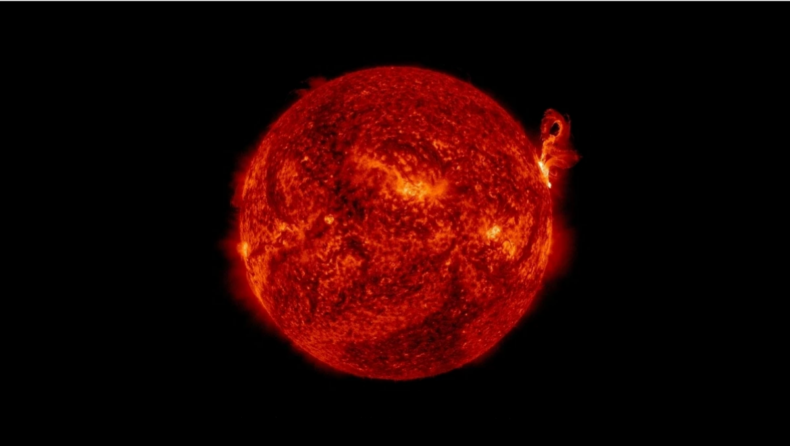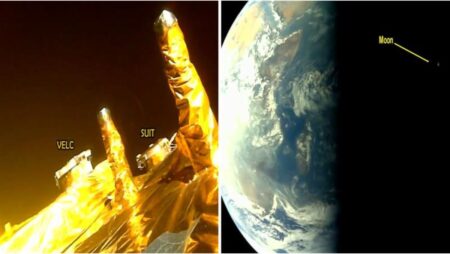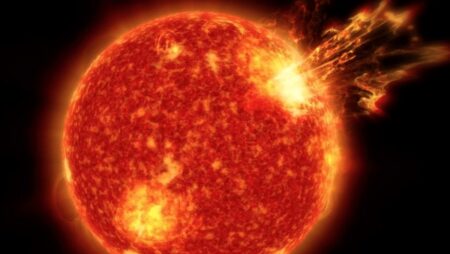Inside the Sun, scientists have discovered a class of never-before-seen waves that flow in the opposite direction of its rotation and travel at speeds that defy explanation. According to a new study, the “undetermined nature of these waves provides novel physics and fresh insight into solar dynamics.”
This study was carried out at NYU Abu Dhabi’s Center for Space Science in partnership with the Tata Institute of Fundamental Research (TIFR) and New York University, employing computing resources from both NYUAD and TIFR.
How did researchers detect these waves?
The researchers, led by Research Associate Chris S. Hanson, detailed how they analyzed 25 years of space and ground-based Global Oscillation Network Group (GONG) data and 10 years of observations captured by the space-based Helioseismic and Magnetic Imager (HMI) data to detect these waves in the study, Discovery of high-frequency-retrograde vorticity waves in the Sun, which was published in the journal Nature Astronomy.
While the HFR waves resemble the well-known Rossby–Haurwitz waves, they travel three times quicker, a pace that existing solar models cannot explain.
“We weren’t hunting for these waves on purpose,” Hanson, the study’s lead author, wrote in an email. “The ‘convective dilemma,’ where theory proposes, but observations cannot uncover, the existence of enormous convective cells,” also known as “giant cells,” is one of the Sun’s major riddles.
“We were looking in the data for traces of these cells,” he added, “and that’s when we discovered the HFR waves.” “At first, we assumed these were ‘giant cells,’ but we ruled them out later (as described in the report).”
The waves show on the Sun’s surface as a whirling vortex pattern that moves against the Sun’s spin. The trouble is that these high-frequency retrograde vorticity waves appear to be moving three times faster than theory predicts, and solar physicists have yet to figure out why.
What’s going on inside the daystar?
The Coriolis force, which occurs when the equator of a spinning spherical object travels faster than its poles, causes vorticity waves, which we know can occur on Earth.
The waves can also be affected and modified by three different mechanisms: magnetism, gravity, and convection. However, none of them was able to explain the observational data.
“If any of these three processes could be linked to the high-frequency retrograde waves, then the discovery would have solved some open concerns we still have about the Sun,” Hanson says.
“However, these new waves appear to be unrelated to existing processes, which is intriguing since it raises a whole new set of concerns.”
What comes after the discovery?
“We can try to discover these waves in other stars if we understand why and how they are built up,” Hanson added. “As a result, new knowledge of star formations will emerge.”
“The next step for us is to construct a numerical model that will represent the behaviour of inertial waves in the Sun,” he said.
The researchers want to use complicated simulations of the Sun’s enigmatic interior, which cannot be detected directly with ordinary telescopes, to continue studying the possible sources of the waves. Solving this solar riddle could provide answers to a slew of unanswered issues regarding the Sun’s structure, rotation, and physics, as well as the structure, rotation, and physics of other stars.
“The existence of HFR modes and their origin is a great enigma,” said Shravan Hanasoge, a co-author of the work. “It can throw light on the Sun’s previously inaccessible interior.”
Published By :- Tarsem Singh
Edited By :- Khushi Thakur













